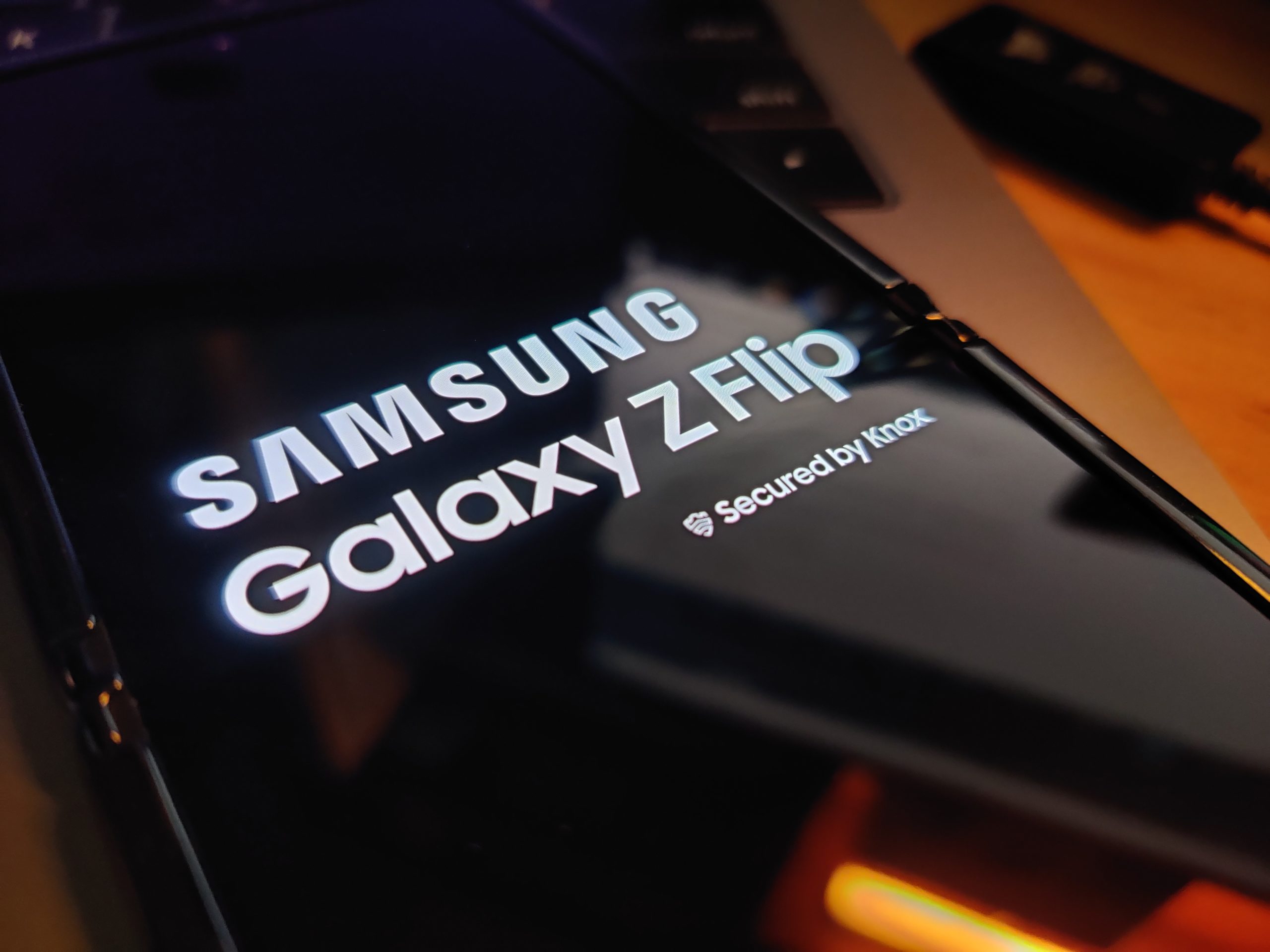The Samsung Galaxy Z Flip is the first foldable phone that I’ve genuinely been interested in. Not just because of the form factor, but because I felt like Samsung learned from the Galaxy Fold and are probably offering something usable without the fragility or nostalgic drive to get me there.
What it offers is an experience that feels like a natural and normal phone in the current market. This is with some form factor bonuses and functionality you can’t get from a normal smartphone.
The honest — and early impression — truth is that this isn’t a phone for everyone, it’s for people who want the latest gimmicky gadgets. Further to this, it is for people who don’t mind paying for the privilege of having the latest and greatest.
There are immediately obvious areas where the device lacks against counterparts. The specs aren’t up to front-line, ultra-premium standard for 2020:
- A 6.7” (when unfolded) screen with a 1080 x 2636 pixel resolution (~425 ppi density)
- Android 10 running Samsung One UI 2
- SD855+ and Adreno 640GPU
- 256GB Storage and 8GB RAM
- 3,300mAh battery with 15W fast charge
- Connectivity: Connectivity: 802.11 a/b/g/n/ac, Bluetooth 5 BLE, NFC and USB C
- Side mount fingerprint sensor
- Dimensions Unfolded: 167.3 x 73.6 x 7.2 mm, Folded: 87.4 x 73.6 x 17.3 mm and weighs 183g
The folding functionality isn’t going to open any magical doors, in fact, the best it has to offer is the half-folded split-screen mode. While that does open the door to split-screen functionality similar to other Samsung Galaxy devices, the screen is physically too small for it to be a regular use item.
What the Galaxy Z Flip does show us is that foldable phones can be functional and in fact very useful, without needing to handle with care the way Galaxy Fold users had to.
There are still a few areas of concern though
Let’s talk about some of the things that bothered me early in my time with the Galaxy Z Flip. The screen crease seems to come and go, I don’t mean that it actually disappears but that I really notice it sometimes and others it’s not as prevalent. In the grand scheme of things it’s a really minor thing but being as it’s early technology I do wonder how well it will fare over time.
The battery isn’t brilliant, while I’ve only had my hands on this little beast for a day and a half my initial feeling is that the 3,300mAh battery was a compromise to the size of the device. While it would be lovely to have an epic 5,000mAh battery that gives you a guaranteed full day – even on a big day – it’s just not practical when users want weight reduction, single-handed use, with good screens, good sound, good cameras and battery life. On my first full day, I was starting to think about a quick charge by 3 pm — probably because I was playing with the phone so much — just to make sure I got to bedtime with a functioning phone.
The cameras are very functional, but not brilliant. They’re not to the level of the Galaxy S20 device range released at roughly the same time. The results are similar to the Galaxy S10 cameras from last year, very good but perhaps not what you’d expect from a device that costs this much.
Finally, while it’s not of critical importance to many most users – the Galaxy Z Flip isn’t 5G. With the quality of our 4G networks in Australia that probably doesn’t matter for the Z Flip. In honesty, for a device like this which is proving a point and bringing foldable flip smart phones to the world — none of that actually matters.
It feels normal and that’s amazing
There are some benefits to the folding form factor and front screen aside from the small, folded footprint. With their continual development it seems that manufacturers see folding phones as the future and there’s plenty to explore with this particular device.
Notifications are quick and easy to check but lacking in details on such a small screen, even without the further distraction of other notifications. The Flex mode can be used for a number of features, like video calls and media playback. We’ll explore that further during our full review in a couple of weeks.
The folding mechanism is smooth and solid, it feels like the hinge will last and once it’s open the phone feels like a “normal” smartphone. The touch feels quite solid, unlike the Galaxy Fold where the screen feels soft and the phone itself is roughly the same dimensions as any other device.
Folding devices are coming of age before our eyes and the future looks pretty darn good. At the moment though, folding phones are a yet to be proven technology. As good as they have become in a short space of time, it still feels like first generation technology and as a result, not quite ready for everyday use by “average” users. As I said earlier though I’ve had less than two days with this new foldable. It will be interesting to see if my opinion changes with more use.
Stay tuned for the upcoming full review.







Nice first impressions, the price is scary for an average phone with a crease. The build looks nice though and I’m sure durable.
I’d be interested in seeing a review in say 12 months time to see how robust the folding screen is.